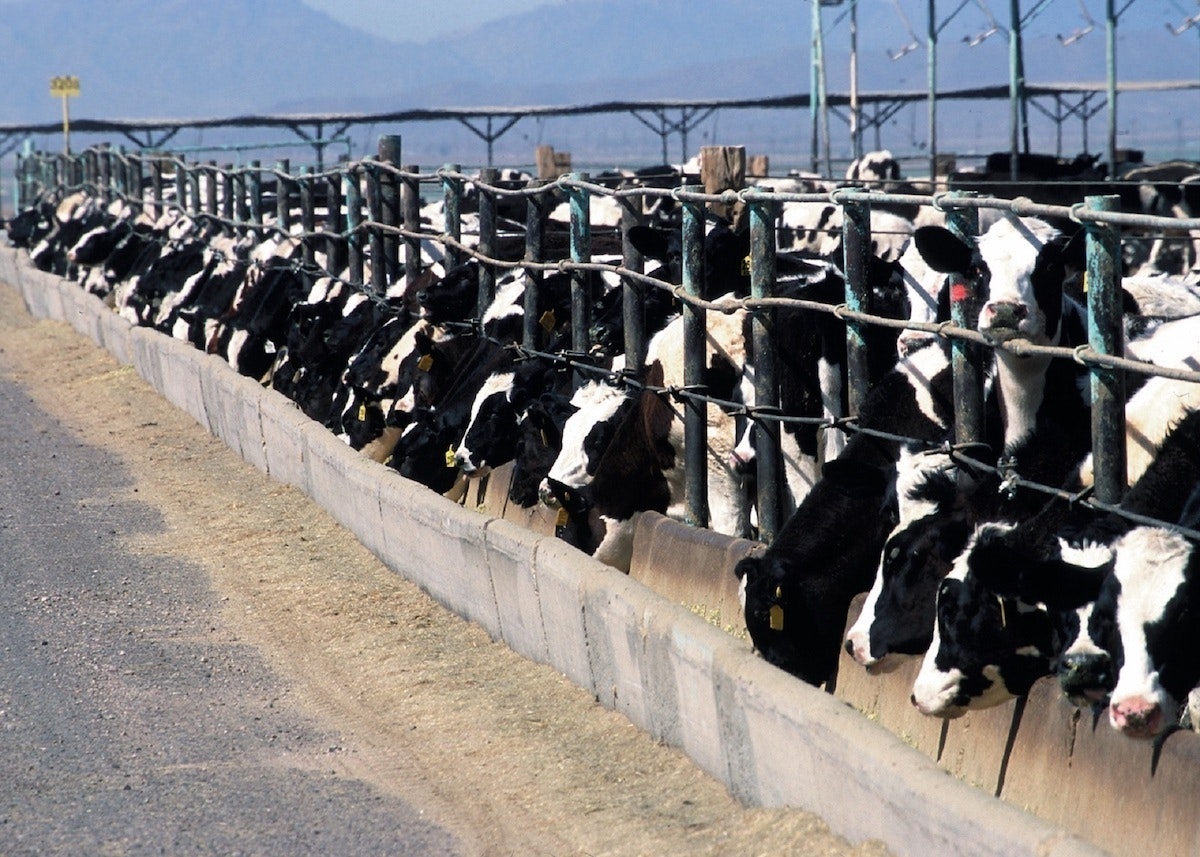How California Can Curtail Global Warming While Feeding the World
The state's new budget is a step toward helping beef and dairy producers do both.

-
-
Share
-
Share via Twitter -
Share via Facebook -
Share via Email
-
California has some great news for its beef and dairy industries—and for climate conscious consumers. Thanks to the efforts of Senator Josh Becker, his staff, and the California Department of Food and Agriculture (CDFA), the governor's budget for 2023-2024 includes a groundbreaking provision to support livestock producers in reducing methane emissions.
Methane's potent—albeit short-lived—impact on global warming means that any reduction in methane emissions will significantly curtail future warming. About 28% of methane emissions in California are generated by enteric fermentation, a natural part of the digestive process in dairy and beef cattle. (Microbes in the gut break down plant fibers, releasing methane as a byproduct, primarily through burps.) In turn, reducing enteric methane is a key strategy to meet the state's ambitious overall climate goals.
The governor’s budget allocates $25 million for the Enteric Fermentation Incentive Program, which will provide financial incentives to livestock producers who voluntarily adopt products or strategies that are safe and scientifically proven to reduce enteric emissions. These could include feed additives, such as red seaweed or 3-nitrooxypropanol (trade name: Bovaer), that can lower methane production by altering the microbial activity in the rumen. Additionally, unlike a Senate bill that proposed a similar program that was focused on feed additive use on dairies, this program can support a wide range of emerging technologies and practices that could be used on both dairy and beef operations like vaccines, gene editing, and tannin-rich forages. Including beef producers in the program is particularly important given the relatively few options beef producers otherwise have to cut emissions.
Incentive programs help alleviate the financial risk for livestock producers of trying new approaches. Agricultural producers typically face small profit margins, which deters them from trying new practices or technologies that don’t immediately impact their bottom line, or aren’t well established. Depending on the method used, mitigating enteric methane can help farmers’ bottom lines by preventing energy from the animal’s diet being lost as gas instead of turning into meat or milk. But it is difficult to see those cost gains immediately. Additionally, when methane mitigation technologies are profit neutral, incentives can help tip the scale for producers to adopt approaches and technologies for the public good—like reducing peak warming.
California’s Enteric Fermentation Incentive Program is a win-win for both the environment and the economy—it empowers dairy and beef industries to evolve and embrace new, lower-carbon practices. By incentivizing producers to adopt enteric emissions reduction strategies, it will help California achieve its target of reducing methane emissions from livestock by 40% by 2030, and it has the potential to improve animal health and feed efficiency. Some mitigation options—like gene edited calves with reduced susceptibility to bovine viral diarrhea virus—work through improving animal health and enhancing animal productivity. The incentives program will likely spur innovation and the creation of new markets and opportunities for methane reducing product suppliers and researchers.
California is leading the way in addressing enteric fermentation, a global challenge that requires urgent action. ItsEnteric Fermentation Incentive Program, alongside other livestock mitigation programs, could serve as a model for other states and governments on how to build a lower-carbon dairy and beef industry. We at the Breakthrough Institute applaud Becker, his staff, and CDFA for their visionary leadership and commitment to making California’s beef and dairy sector more sustainable.
